An overnight bus journey from Bhubaneshwar on Baloon (the name fascinates me) dropped me to Bolangir and from there my fellow mate and I hopped on to another bus that took us to Bhawanipatna. The bus ride annexed an interesting turn when one of the co-passengers started talking to me and I got to know that about 70% of the bus population were teachers who travel daily. This 2-hours ride is their entertainment stretch and I clutched on to the merry-making in an attempt to ascertain their pleasance in the sweltering heat.
The first day was a waste in terms of traveling but incalculably fruitful in many other perspectives. As suggested by a local lad we proceeded towards Ajanta Lodge where an old man greeted us with long-winded warmth. The place was full but he managed to get us a room at Om Sai Hotel. There was a murder of a prominent contractor that was committed just the previous day by the Maoists thus it was important to make a quick visit at the DFO to know the protocols of entering the sanctuary. Officer Samanta Rai is a very jovial man who came in extremely handy. Although Karlapat Sanctuary does not fall in his division he warned us about the slaughter and after much persuasion, he actually arranged for a car from his end for our safety. We settled on a deal to travel the next day.
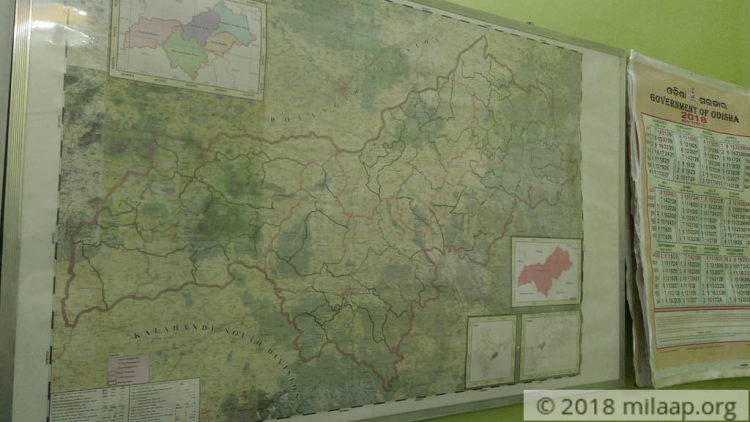
While advancing towards Om Sai Hotel, my eyes secured on a couple of people who were selling unfinished knives and saws. I have been collecting knives from various places for long and I could not help but stop there. As I started corresponding, I made out that this was a bunch of nomadic merchants from Maharashtra who meander various states and sells knives for a living. Digging further I discovered that they have been trying to settle down for long but it seems the Government has turned a blind eye towards them. I made my happy purchase and moved ahead to the Hotel where I was greeted by Sohil, a fledging soul, and budding cricketer. The day passed swishing our exhaustion as we prepared for our next sail. I am still elated by the assorted reactions I received on the killing. For the old men, it was gruesome, for the young ones it was an attempt to save the cult, for workers, it was a way out of exploitation by the rich, for the officer it was the atrocity in the name of communism.
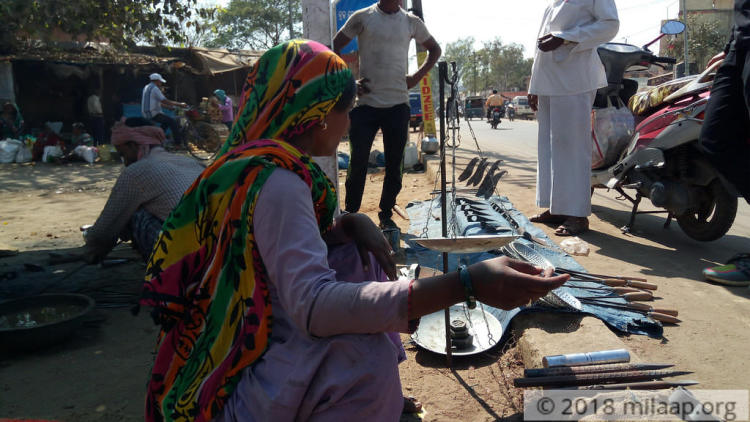
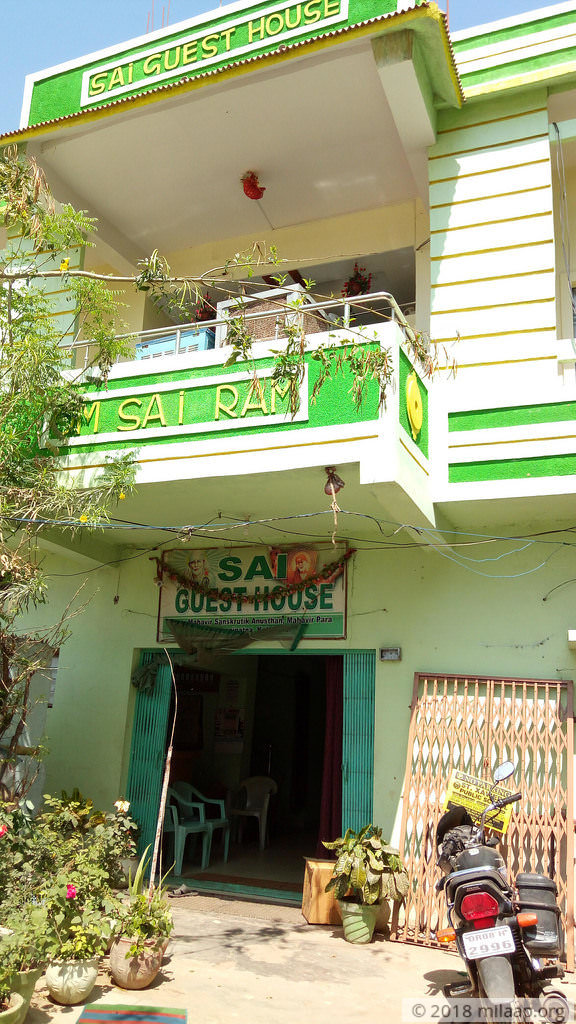
Sada dosa with raw vegetables took my palate away the next morning. The succeeding bliss was a call from the DFO where I was requested not to pay a penny for this writing and promotion. Social research still has a value! The entire safari was free and a guide was also affixed for security. A white bolero with Mr. Sanatan on driver seat waited for us. Chora Tanga Hills is a fancied torture. It will not allow you to turn your head away for a microsecond running along the road right up to Sagada, the checkpoint for Karlapat Sanctuary. About 5kms ahead we stopped at Phulrijharan Waterfalls. Few minutes walk through the woods deliver the disseminated portions of the water body and as I hoed down further the reverberation of the falls got intense. The track towards the Kund (base) was destroyed by a treacherous flood last year loosening the mud.
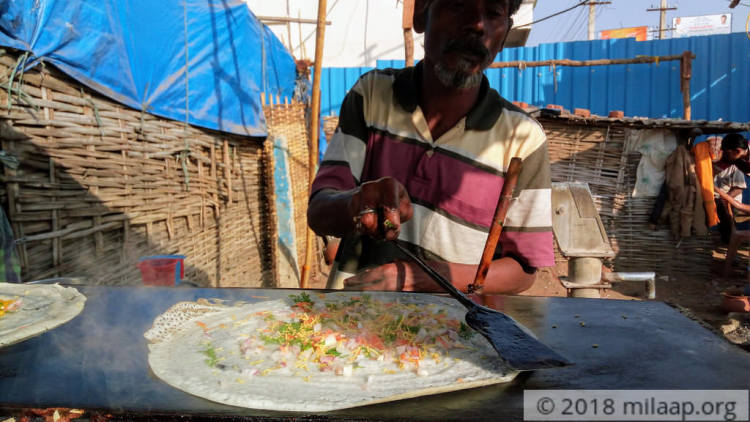



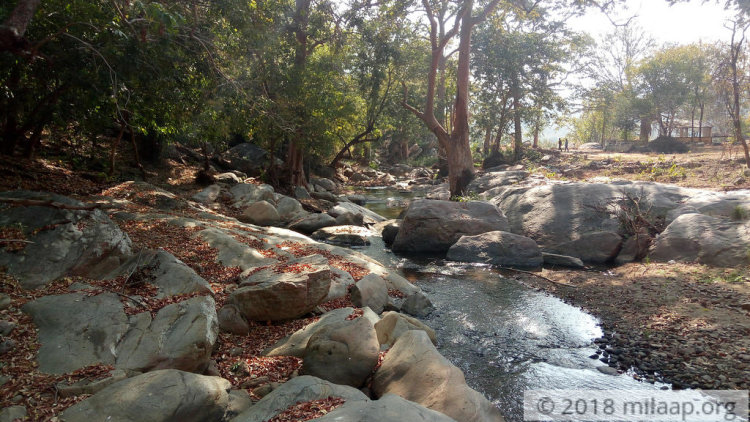
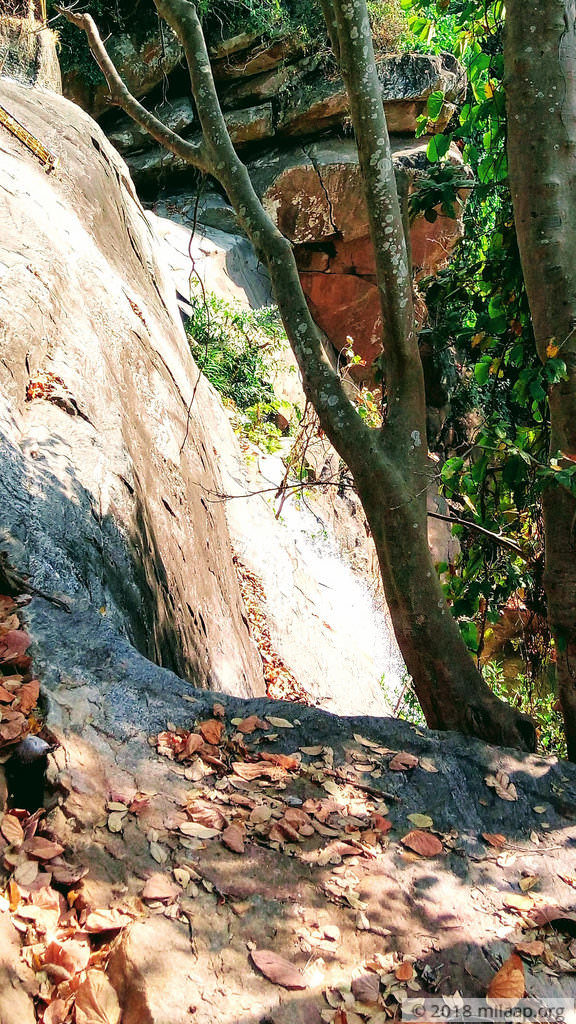
The next sojourn was Jakkam House. Mr. Damodar Singh, the caretaker, took me around and shared stories of tiger and wolves encounter. He went in blues as he described how the tribes of Jakkam (after which the House is named) are fighting every day to save the trees and animals, the magnitude of which has depleted over the years. “If the other animals can stay at peace with each other, why can’t we”, he cries. Jakkam House is soon going to be converted as a rest house and I was invited over for a stay post-March, 2018. The solar panels which I noticed from the adjoining watch-tower is one of the many testimonies of the love for nature the locals behold. I went ahead and staggered around the small medical-plant garden near the wooden house. Paltragaja and Hoam are the two plants my brain can preserve out of many.


A quick right from the wooden house leads to one segment of Sevi Jharan waterfalls where I can vouch one can spend countless hours in the company of motionless water, broken pieces of residual rocks, few monkeys and saplings swamping the countless thoughts a wanderer often stores. The buzz of a bug seems like a horn in such mellowness.

About 7kms from Jakkam is the Kiapadar Gao. In no extremities, I anticipated encountering an Aanganwadi (Kindergarten) in this petite hamlet of trees and earth. There it was, a small cubical with children playing around, books in their hand and perhaps big dreams in their mystified eyes. This center was started by Kabita’s mother after she realized that the young children are inclined towards violence than education. She struggled for many years and managed to gather the fawns to nurture them with the bit she knew. Her priority has been to teach the children to save nature but aloof off the bog of violence. Kabita has passed her 12th and is now a teacher there. She makes it sure the children are within the boundaries of oldness that deserves tutelage.
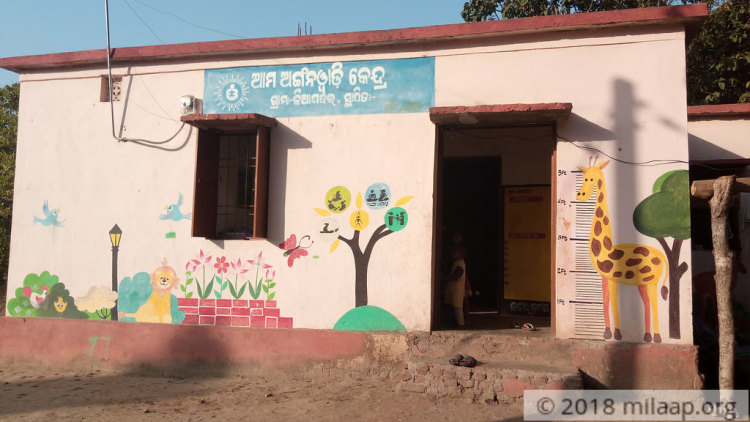
Nature has moved asunder from humanity but people like Damodar Sahib, Kabita and her mother are a constant reminder that we are a part of evolution. It is within our natural genes to protect that from which we emerge. They are the reason why rovers like myself still have terrain to walk upon. On our way back I made a pit stop at Sagada river, despite having been told there is nothing special about it. Perhaps, no tourist visits the brook but I could not have witnessed a better launch of sunset. A quaint river, followed by shrubberies and guarded by a huge hill that drops the curtain for the day’s magnificent cabaret.
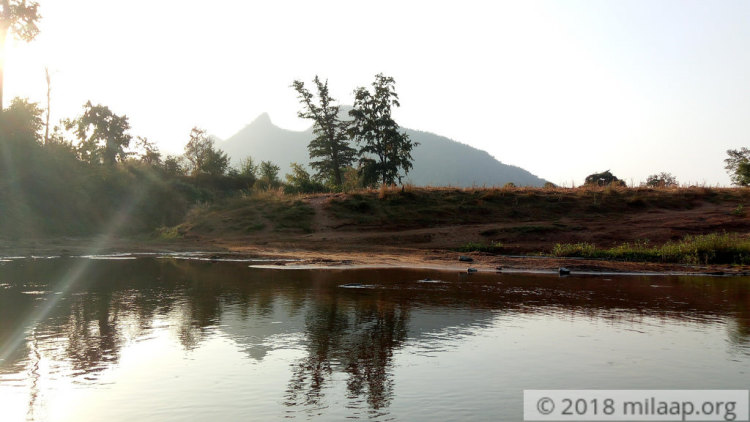
The first day was a waste in terms of traveling but incalculably fruitful in many other perspectives. As suggested by a local lad we proceeded towards Ajanta Lodge where an old man greeted us with long-winded warmth. The place was full but he managed to get us a room at Om Sai Hotel. There was a murder of a prominent contractor that was committed just the previous day by the Maoists thus it was important to make a quick visit at the DFO to know the protocols of entering the sanctuary. Officer Samanta Rai is a very jovial man who came in extremely handy. Although Karlapat Sanctuary does not fall in his division he warned us about the slaughter and after much persuasion, he actually arranged for a car from his end for our safety. We settled on a deal to travel the next day.

While advancing towards Om Sai Hotel, my eyes secured on a couple of people who were selling unfinished knives and saws. I have been collecting knives from various places for long and I could not help but stop there. As I started corresponding, I made out that this was a bunch of nomadic merchants from Maharashtra who meander various states and sells knives for a living. Digging further I discovered that they have been trying to settle down for long but it seems the Government has turned a blind eye towards them. I made my happy purchase and moved ahead to the Hotel where I was greeted by Sohil, a fledging soul, and budding cricketer. The day passed swishing our exhaustion as we prepared for our next sail. I am still elated by the assorted reactions I received on the killing. For the old men, it was gruesome, for the young ones it was an attempt to save the cult, for workers, it was a way out of exploitation by the rich, for the officer it was the atrocity in the name of communism.


Sada dosa with raw vegetables took my palate away the next morning. The succeeding bliss was a call from the DFO where I was requested not to pay a penny for this writing and promotion. Social research still has a value! The entire safari was free and a guide was also affixed for security. A white bolero with Mr. Sanatan on driver seat waited for us. Chora Tanga Hills is a fancied torture. It will not allow you to turn your head away for a microsecond running along the road right up to Sagada, the checkpoint for Karlapat Sanctuary. About 5kms ahead we stopped at Phulrijharan Waterfalls. Few minutes walk through the woods deliver the disseminated portions of the water body and as I hoed down further the reverberation of the falls got intense. The track towards the Kund (base) was destroyed by a treacherous flood last year loosening the mud.






The next sojourn was Jakkam House. Mr. Damodar Singh, the caretaker, took me around and shared stories of tiger and wolves encounter. He went in blues as he described how the tribes of Jakkam (after which the House is named) are fighting every day to save the trees and animals, the magnitude of which has depleted over the years. “If the other animals can stay at peace with each other, why can’t we”, he cries. Jakkam House is soon going to be converted as a rest house and I was invited over for a stay post-March, 2018. The solar panels which I noticed from the adjoining watch-tower is one of the many testimonies of the love for nature the locals behold. I went ahead and staggered around the small medical-plant garden near the wooden house. Paltragaja and Hoam are the two plants my brain can preserve out of many.


A quick right from the wooden house leads to one segment of Sevi Jharan waterfalls where I can vouch one can spend countless hours in the company of motionless water, broken pieces of residual rocks, few monkeys and saplings swamping the countless thoughts a wanderer often stores. The buzz of a bug seems like a horn in such mellowness.

About 7kms from Jakkam is the Kiapadar Gao. In no extremities, I anticipated encountering an Aanganwadi (Kindergarten) in this petite hamlet of trees and earth. There it was, a small cubical with children playing around, books in their hand and perhaps big dreams in their mystified eyes. This center was started by Kabita’s mother after she realized that the young children are inclined towards violence than education. She struggled for many years and managed to gather the fawns to nurture them with the bit she knew. Her priority has been to teach the children to save nature but aloof off the bog of violence. Kabita has passed her 12th and is now a teacher there. She makes it sure the children are within the boundaries of oldness that deserves tutelage.

Nature has moved asunder from humanity but people like Damodar Sahib, Kabita and her mother are a constant reminder that we are a part of evolution. It is within our natural genes to protect that from which we emerge. They are the reason why rovers like myself still have terrain to walk upon. On our way back I made a pit stop at Sagada river, despite having been told there is nothing special about it. Perhaps, no tourist visits the brook but I could not have witnessed a better launch of sunset. A quaint river, followed by shrubberies and guarded by a huge hill that drops the curtain for the day’s magnificent cabaret.









